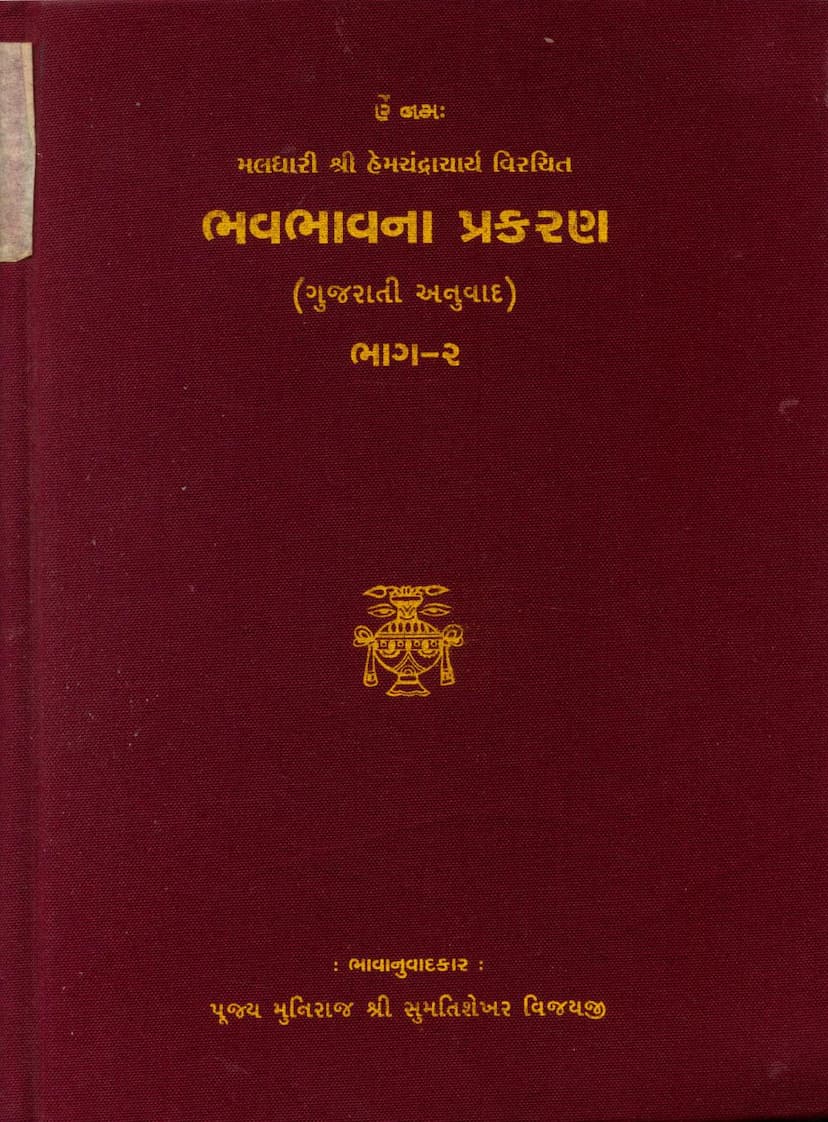Bhavbhavna Prakaran Part 02
Added to library: September 1, 2025

Summary
Summary of Bhav Bhavna Prakaran Part 02
This Jain text, "Bhav Bhavna Prakaran Part 02," authored by Sumtishekharvijay and published by Arihant Aradhak Trust, serves as the second part of a spiritual guide aimed at fostering a deeper understanding of Jain principles. The book, translated into Gujarati by Muni Shri Sumtishekhar Vijayji, is dedicated to spiritual well-being and offers profound insights into the cyclical nature of existence and the path to liberation.
Key Themes and Concepts:
The text is structured around a series of Bhavnas (contemplations) that guide the reader through various stages of spiritual awareness and ethical conduct. These Bhavnas are:
-
Asharan Bhavna (Contemplation of Non-Absolution): This section emphasizes the transient and impermanent nature of all worldly possessions, relationships, and even the physical body. It highlights the futility of seeking refuge in anything other than the Jain Dharma, especially in the face of inevitable suffering caused by disease, old age, and death. Through illustrative stories and verses, it demonstrates how even the most powerful beings and vast resources offer no lasting protection against the forces of karma.
-
Ekatva Bhavna (Contemplation of Oneness): This Bhavna underscores the fundamental solitude of the soul. It explains that each individual soul is responsible for its own actions and experiences their karmic consequences alone. While family and friends may offer temporary comfort, ultimately, the soul journeys through the cycle of birth and death independently. This contemplation aims to detach the individual from worldly attachments and foster self-reliance in the spiritual journey.
-
Anyatva Bhavna (Contemplation of Otherness): This Bhavna further elaborates on the separateness of the soul from all external entities, including the body, wealth, and relationships. It emphasizes that these are temporary and ultimately do not belong to the soul. By understanding this inherent otherness, the reader is encouraged to cultivate detachment and focus on the true, eternal nature of the soul.
-
Ashuchi Bhavna (Contemplation of Impurity): This section delves into the impure and often repulsive aspects of the physical body. It describes the body's composition, its various secretions, and the inevitability of decay and death. The aim is to foster a sense of renunciation and to disassociate oneself from bodily attachments, recognizing the body as a vessel for spiritual practice rather than an object of desire.
-
Lok Swabhav Bhavna (Contemplation of the Nature of the World): This Bhavna explores the inherent characteristics of the universe, highlighting its impermanence, suffering, and the relentless cycle of cause and effect (karma). It aims to cultivate a realistic understanding of existence, dispelling illusions and fostering a sense of detachment from worldly phenomena.
-
Ashrava Bhavna (Contemplation of Influx of Karma): This section explains the mechanisms by which karmic influx occurs, primarily through the senses, passions (kashayas), and actions. It details how attachment to these influxes leads to further bondage in the cycle of birth and death, emphasizing the importance of controlling the senses and curbing passions.
-
Samvar Bhavna (Contemplation of Stoppage of Karma): In contrast to Ashrava, this Bhavna focuses on the practices and principles that lead to the stoppage of karmic influx. It highlights the importance of controlling the senses, cultivating virtues like non-violence, truthfulness, and non-possessiveness, and engaging in practices that purify the mind and actions, thereby preventing the accumulation of new karma.
-
Nirjara Bhavna (Contemplation of Shedding of Karma): This Bhavna discusses the process of shedding existing karma through rigorous spiritual practices like fasting, penance, meditation, and austerity. It emphasizes that by diligently engaging in these practices, individuals can purify themselves of past karmic impurities and pave the way for spiritual liberation.
-
Jinvachan Bodhi Bhavna (Contemplation of Jain Teachings and Wisdom): This section highlights the profound wisdom and teachings of the Jinas (Tirthankaras). It stresses the importance of adhering to their teachings, cultivating right faith, knowledge, and conduct, and understanding the true nature of reality to achieve spiritual liberation.
-
Manushya Gati Varnan (Description of the Human Realm): The text also provides a detailed description of the human realm, its complexities, and the unique opportunities it offers for spiritual progress. It acknowledges the suffering inherent in human life, from birth to old age and death, but also emphasizes the potential for spiritual growth and liberation.
-
Tiryak Gati Varnan (Description of the Animal Realm): This section likely describes the suffering and limitations of beings in the animal realm, underscoring the impermanence and hardship faced by those in lower births, reinforcing the value of the human birth.
-
Naraka Gati Varnan (Description of the Hell Realm): The text details the horrifying suffering and torment endured by beings in the hellish realms, serving as a stark warning against unrighteous actions and further emphasizing the importance of righteous living.
-
Dev Gati Varnan (Description of the Celestial Realm): While acknowledging the pleasures and enjoyments of the celestial realms, the text likely points out their transient nature and the eventual fall back into the cycle of birth and death, thus reinforcing the ultimate goal of liberation.
Narrative Style and Examples:
The "Bhav Bhavna Prakaran Part 02" employs a rich narrative style, using numerous stories and parables drawn from Jain scriptures and traditions. These anecdotes, such as the stories of King Chandrasen, King Somchandra (Jitshatru), Kucheekarna, Tilak Sheth, Sagar Chakri, Mekh Kumar, and others, serve to illustrate the principles discussed in each Bhavna. These narratives vividly depict the consequences of attachment, aversion, karma, and the suffering inherent in the cycle of rebirth, ultimately reinforcing the Jain path to liberation.
Spiritual and Ethical Guidance:
The book's core message revolves around cultivating spiritual wisdom, ethical conduct, and detachment from worldly pleasures. It serves as a comprehensive guide for Jain followers, encouraging them to reflect on the nature of existence, understand the workings of karma, and diligently practice the principles of Jainism to achieve ultimate peace and liberation. The text aims to instill virtues like wisdom, compassion, self-control, and righteousness, guiding the reader towards a life of spiritual purpose and ultimate salvation.